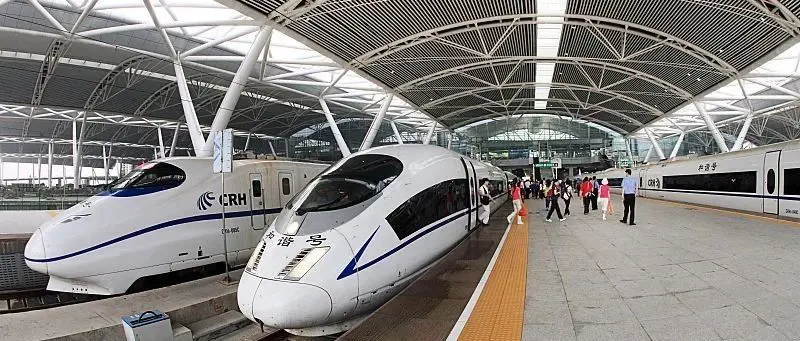Starting from this month, electronic invoices can be issued for train tickets.

On a certain date, the State Taxation Administration, the Ministry of Finance, and China State Railway Group Co., Ltd. issued a public announcement stating that starting from a certain date, a nationwide promotion of fully digitalized electronic invoice services for passenger transportation will be implemented on the national railway network. After passengers complete ticket purchase, refund, or change transactions for domestic railway electronic tickets, they can obtain electronic invoices through the railway website and mobile client (hereinafter referred to as the railway). This will greatly facilitate passengers in obtaining reimbursement documents.
The China State Railway Group has earnestly implemented the central government's deployment and requirements for the orderly advancement of electronic invoicing in the railway sector. Closely following the national progress in the promotion of digital electronic invoices, and in response to the needs of the vast number of passengers, the group has actively collaborated with the State Taxation Administration and the Ministry of Finance to advance reforms in electronic invoicing for railway passenger transport. In conjunction with the actual operations of railway passenger services, an electronic invoicing service platform for railway passenger transport has been developed, achieving interconnection with the electronic invoicing service platform of the State Taxation Administration. After preliminary pilot improvements, technical testing, and security assessments, the platform is now fully prepared for nationwide application. The comprehensive digital electronic invoice will be promoted and used in the field of railway passenger transport across the country starting from the designated date.
Electronic invoices are payment reimbursement vouchers issued by railway transportation enterprises to service purchasers (which can be individuals or enterprises and institutions) in the form of electronic data, in accordance with tax authorities' regulations, after providing domestic passenger transportation services. These electronic invoices carry the same legal validity as paper VAT invoices. Compared to railway paper reimbursement vouchers, the face of electronic invoices retains passenger information and itinerary information, and adds details such as the purchaser's name and unified social credit code. Obtaining electronic invoices is more convenient and secure; passengers can apply for them online through the railway system without needing to visit station windows or self-service ticketing machines. They can be downloaded and printed multiple times, avoiding the risk of loss or damage. Usage is more efficient and economical; electronic invoices use information-based storage and transmission methods, allowing purchasers to handle verification and tax deduction online, effectively reducing management costs. Operation is more environmentally friendly and cost-effective; electronic invoices are fully paperless, significantly reducing paper consumption and promoting cost savings and energy efficiency within enterprises.
Passengers can log in to their railway account to apply for an electronic invoice within days after the end of their journey or payment of the ticket refund (change) fee (hereinafter referred to as days). After entering the purchaser's name, unified social credit code, and other information, the system will issue an electronic invoice based on the facts and upload the electronic invoice data file to the tax authorities. Passengers can query and download the electronic invoice through the railway or personal income tax system.
If the passenger fills in the invoice information incorrectly, or if the transportation service is suspended, resulting in a change in the itinerary, they can reapply for a new electronic invoice within the specified number of days with the accurate information or actual itinerary, and the original electronic invoice will be voided.
The purchaser can verify, download, and offset taxes for electronic invoices through the Tax Digital Account on the State Taxation Administration's Electronic Invoice Service Platform, or verify them through the National VAT Invoice Verification Platform. After issuing electronic invoices, railway transport enterprises will no longer provide paper reimbursement vouchers, and passengers cannot issue both electronic invoices and paper reimbursement vouchers simultaneously; cross-border passenger transport services will continue to use the current railway reimbursement vouchers.
To ensure a smooth transition to the electronic reform of railway passenger invoices, in accordance with the requirements of the State Taxation Administration, the China State Railway Group will continue to retain paper reimbursement vouchers for a certain period. At the same time, it will promptly assess the implementation of electronic invoices and continuously improve the ticket purchasing experience for passengers. For information related to the handling of electronic railway passenger invoices, passengers can follow the "Railway" announcements and the official Weibo and WeChat accounts of "China Railway" for more details.

